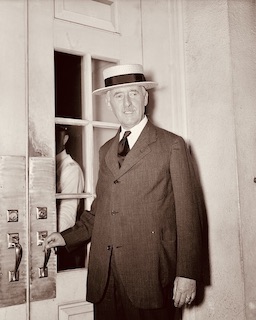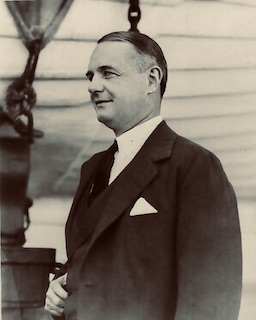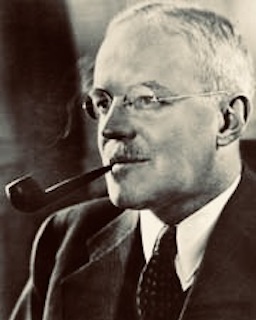The views in this post are those of the author and do not represent the policy or position of the National Defense University, the Department of Defense, or the United States Government.
The Central Intelligence Act of 1949, passed seventy-four years ago this summer, did not create the Central Intelligence Agency (CIA); the agency had been created in 1947, in a brief section of the gargantuan National Security Act of 1947. The 1949 Act, however, set the groundwork for what the agency would become in the following decades, by exempting if from public disclosure regarding its activities, budget, and personnel. That nearly two years passed between the founding of the agency and the legislation that permitted it to conduct its activities without public disclosure may seem surprising to those familiar with what the CIA would go on to do, but the delay speaks to the ambiguity and uncertainty within Congress, the executive branch, and the national security establishment as to just what kind of agency the CIA should be, and what it should be expected to do. It took a long, winding path to get to the point where something like the CIA Act of 1949 could become law.

When the CIA was created, the United States did not have much in the way of an intelligence tradition. While examples of spying can be found throughout U.S. history (for more information, please see TAH’s volume, American Foreign Policy to 1899), there was no permanence to U.S. intelligence arrangements; much as with the army itself, the federal government tended to assemble what it needed on an ad hoc basis in the face of a crisis. That began to change when the army and the navy established their own intelligence services in the late 19th century, but they tended to focus on their specific, technical areas of interest and were feared by officers as career dead-ends. The so-called “Black Chamber,” jointly funded by the U.S. Army and the State Department, lasted from 1919 to 1929 and achieved substantial cryptologic successes before it was shuttered by Secretary of State Henry Stimson. Stimson’s apocryphal pronouncement that “gentlemen do not read each other’s mail,” whether he actually said it or not, reflected a common U.S. attitude towards espionage as something tawdry and distasteful, something practiced by the venal and corrupt states of Europe rather something a democratic people should endorse.
World War II changed that dynamic, as it changed so much else in American society and government. After the U.S. entry to the war, the Office of Strategic Services was created under the leadership of William “Wild Bill” Donovan. Donovan took on a number of a responsibilities and pushed for his new organization to become a vital part of the American defense establishment. While his organization is often pointed to as the direct ancestor of the CIA, it was not a simple path from one to the other. The OSS was disbanded immediately after World War II ended; partly, this dissolution was due to petty, bureaucratic concerns. Military intelligence agencies resented the idea of a separate, civilian agency, and J. Edgar Hoover feared that the OSS would be a rival to his Federal Bureau of Investigation. Donovan had been trusted by Franklin Roosevelt, but not Harry Truman. These opponents benefitted from, but did not create, the distrust many Americans felt towards the idea of an intelligence agency and the fear that it would create an “American Gestapo.” Donovan, and many OSS veterans, continued to advocate for his vision of an expansive, active intelligence agency, but most of them had to do so from outside government service. The OSS’ constituent parts were either shifted to different departments or closed down.
Even without the OSS, however, Truman and his advisors did recognize that coordination between existing intelligence branches was important. After the shock of Pearl Harbor, American distrust of a government intelligence agency had to compete with a determination that the United States never allow a similar surprise attack to hit it again. Instead of the OSS, the Truman administration established the Central Intelligence Group (CIG), led by the Director of Central Intelligence (DCI). The DCI title outlived the CIG; while future DCIs would often be referred to as the “CIA director,” the title reflected the fact that the DCI had responsibility to coordinate the activities of every agency and organization that encompassed what became known as the Intelligence Community (IC). (This changed after 9/11 with the establishment of the position of Director of National Intelligence.)

The CIG represented a “clearinghouse” idea for managing intelligence, a place where the product collected by the rest of the IC would be interpreted and analyzed. Problems in the concept became apparent quickly, however. The CIG’s funding came from the different departments that contained elements of the IC, not directly from Congress. It was always a secondary priority. Its senior positions were seen as career-killers; the creation of the CIA in 1947 was intended to change this dynamic, but it remained a weak agency.
At the same time, the tension between the United States and the Soviet Union was becoming more serious, intractable, and public. As the United States began its efforts to contain the Soviet Union, and Soviet control of Eastern Europe became more solidified, the advocates of Donovan’s OSS ideal began calling for an effort to transform the CIA from an agency that only analyzed to one that would conduct espionage and covert action. Many within the government agreed, and the CIA began to conduct limited covert action; while its founding charter was short, the last clause of its responsibilities directed it to conduct “all other functions and duties” related to intelligence as directed by the National Security Council, an elastic phrase that was the CIA’s legal basis forits activities going forward. DCI Roscoe Hillenkoetter, however, was widely seen as a weak leader, and during his tenure the CIA was frequently criticized for ineffectiveness.
George Kennan, architect of the containment policy, called for what he referred to as “political warfare”; psychological operations, influence campaigns, and the like to force the Soviet Union on the defensive. He oversaw the creation of the obliquely-named Office of Policy Coordination (OPC), jointly funded by the State Department and CIA but functionally independent from both. Its leader, Frank Wisner, began thinking beyond the limits of Kennan’s containment doctrine to efforts to roll back the Iron Curtain through unconventional, covert warfare. The OPC, however, also suffered many setbacks, though its failures were much more secret than the CIA’s. All the while, the international situation only grew more threatening, especially following the Soviet-backed coup in Czechoslovakia in 1948 that solidified the stalemate between Western and Eastern Europe.
The American public’s wariness of intelligence agencies became a secondary consideration to the need for the kind of active and powerful organization that Wild Bill Donovan had wanted. The Central Intelligence Act of 1949 was a decisive step in achieving that. When Hillenkoetter was replaced following the outbreak of the Korean War in 1950 by Dwight Eisenhower’s former Chief of Staff, Walter Beedle Smith, the agency gained an experienced, serious DCI. Smith utilized the increased power he had as a result of the 1949 act to bring the OPC firmly under his control. He also brought in more veterans of the OSS, cementing the CIA as its inheritor.

One of those OSS veterans became Smith’s deputy and ultimate successor, Allen Dulles. During Dulles’ long directorship from 1953-61, the CIA became everything Donovan could have dreamed off, enabled by the Central Intelligence Act of 1949. The legacy of that change, however, is controversial to say the least. Within the agency, operations began to absorb more and more resources and the operations branch became much more influential than the analysis branch, undermining the core purpose of the agency. The lack of disclosure allowed the executive to use the agency for a variety of purposes, which spanned from funding cultural organizations to fight the communists in the realm of ideas to the extremes of medical experiments on unwitting American citizens, most famously dosing people with LSD to determine its utility as a tool of “brainwashing.” It was used to overthrow governments that were perceived as in danger of becoming communist. Despite very real and noteworthy successes in espionage and analysis, the CIA became more famous, or infamous, for its covert actions, and was increasingly controversial within the United States.
The CIA Act of 1949 was assed when the threat of the Soviet Union was perceived to be extreme, but as that threat diminished in the 1970s greater calls for oversight emerged. When it was revealed that the CIA had been conducting surveillance on the anti-Vietnam War movement within the United States, violating its charter, Congress began investigating the agency. They ultimately produced new oversight arrangements—which have also been controversial—to try and establish a more effective balance than the 1949 act created between the need for security in a dangerous world and the need for a constitutional government to be accountable for its activities.

